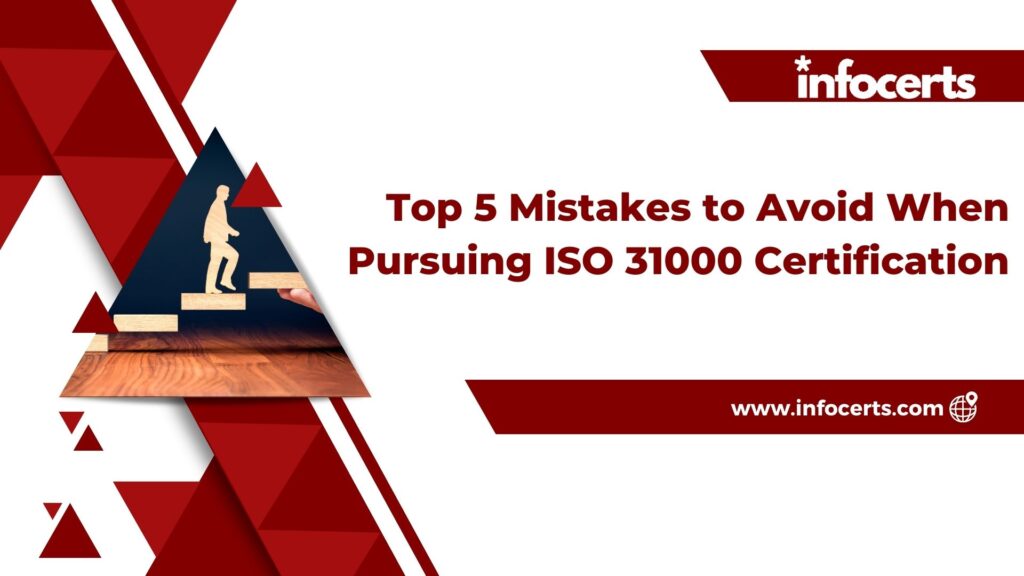In today’s rapidly evolving business landscape, managing risks effectively is paramount for organizational success. ISO 31000 offers a robust framework for risk management, providing guidelines and principles that help businesses identify, assess, and mitigate risks systematically. However, pursuing ISO 31000 certification can be challenging, with many organizations stumbling upon common pitfalls along the way. In this post, we’ll delve into the top 5 mistakes to avoid when pursuing ISO 31000 certification, ensuring a smoother certification journey.
1. Lack of Top Management Support
One of the fundamental pillars of successful ISO 31000 implementation is strong support from top management. Without leadership buy-in, efforts to establish a risk management culture may falter. Top management should champion the adoption of ISO 31000 principles, allocate resources, and actively participate in the risk management process.
2. Inadequate Risk Management Framework
A robust risk management framework forms the backbone of ISO 31000 compliance. Organizations often make the mistake of adopting a one-size-fits-all approach or failing to tailor the framework to their specific needs. Customizing the risk management framework to align with organizational objectives, context, and risk appetite is essential for effective implementation.
3. Poor Documentation Practices
Documentation plays a crucial role in demonstrating compliance with ISO 31000 requirements. However, many organizations struggle with inadequate documentation practices, leading to incomplete or inconsistent records of risk management activities. Clear, concise documentation ensures transparency, facilitates accountability, and provides a valuable reference for future assessments and audits.
4. Insufficient Training and Awareness
Effective implementation of ISO 31000 hinges on the knowledge and skills of personnel involved in the risk management process. Insufficient training and awareness among employees can hinder adoption and adherence to ISO 31000 principles. Investing in comprehensive training programs and raising awareness about the importance of risk management fosters a culture of risk-awareness throughout the organization.
5. Neglecting Continuous Improvement
ISO 31000 emphasizes the importance of continuous improvement in the risk management process. However, some organizations make the mistake of treating certification as a one-time achievement rather than an ongoing journey. Regular reviews, evaluations, and feedback mechanisms are essential for identifying areas for improvement and adapting to changing risk landscapes.
In conclusion, avoiding these common mistakes can significantly enhance the likelihood of successful ISO 31000 certification. By securing top management support, implementing a tailored risk management framework, maintaining robust documentation practices, prioritizing training and awareness, and embracing continuous improvement, organizations can navigate the certification journey with confidence.
Infocerts is committed to helping IT professionals excel in risk management through our comprehensive ISO 31000 course. Enroll today to gain the knowledge and skills necessary to drive organizational success.
For more details and enrollment, contact us at +91 70455 40400.
By incorporating ISO 31000 principles into your risk management practices, you can enhance your organization’s resilience and competitiveness. If you’re ready to take the next step in your risk management journey, consider enrolling in our ISO 31000 course.

